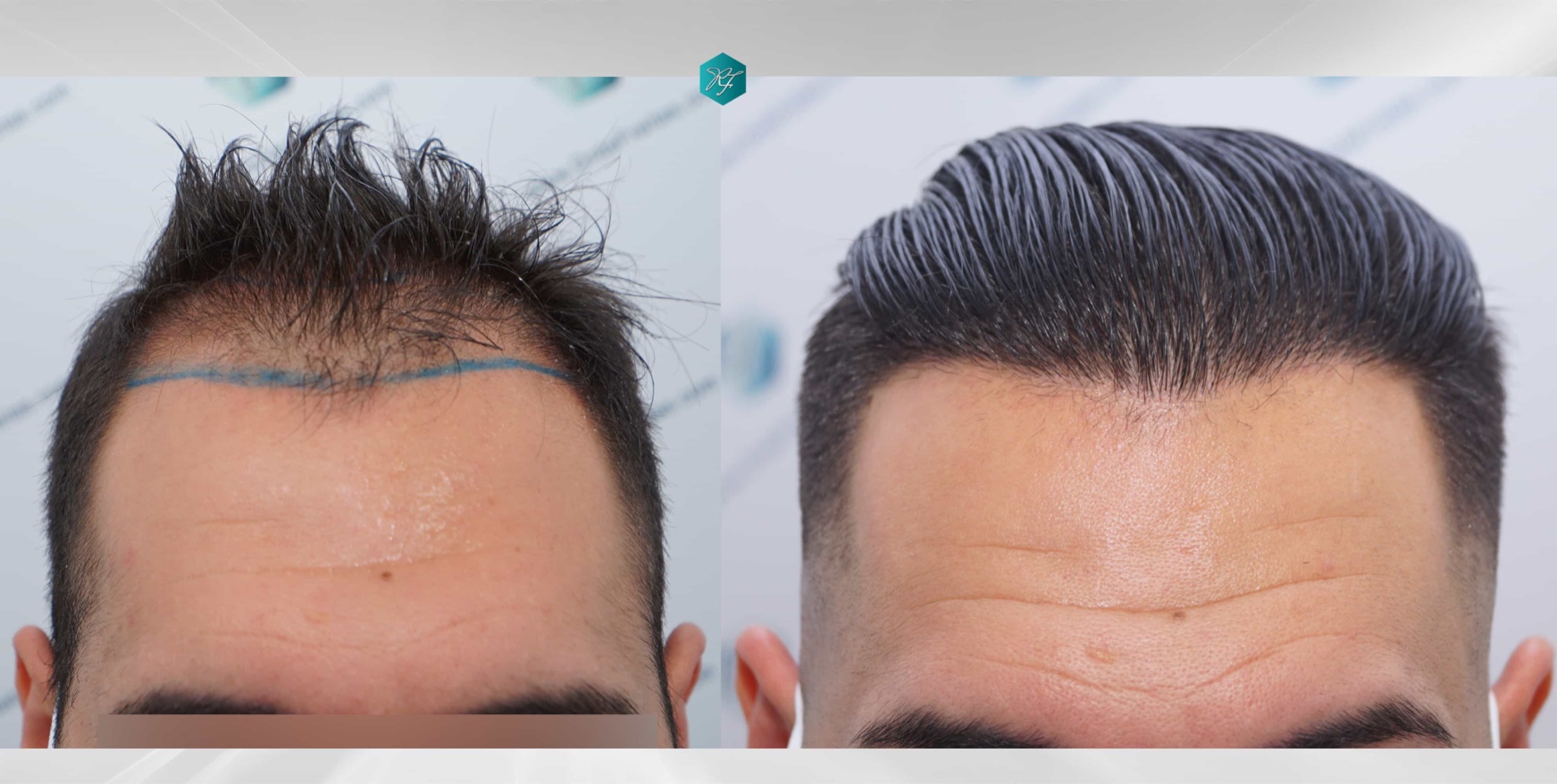Hair
Get Rid of Unwanted Hair Without Irritating Your Sensitive Skin

For many people, hair removal is a necessary part of their grooming routine. However, for those with sensitive skin, hair removal can be a painful and uncomfortable experience. Traditional hair removal methods like waxing, threading, and even shaving can cause irritation, redness, and even skin damage. Fortunately, there are alternatives to these traditional methods that are safe and effective for those with sensitive skin. One of these alternatives is Sapphire IPL Hair Removal.
Sapphire IPL Hair Removal uses intense pulsed light (IPL) technology to target and destroy hair follicles, leading to permanent hair reduction. Unlike traditional hair removal methods, Sapphire IPL Hair Removal does not require the use of harsh chemicals, blades, or other irritants that can cause discomfort or damage to sensitive skin.
One of the biggest benefits of Sapphire IPL Hair Removal is its advanced cooling technology. The device’s built-in cooling system helps protect the skin and minimize discomfort during the hair removal process. This makes Sapphire IPL Hair Removal a safe and comfortable hair removal solution for even the most sensitive skin types.
Another advantage of Sapphire IPL Hair Removal for those with sensitive skin is that it can be customized to each individual’s unique needs and skin type. The device’s settings can be adjusted to ensure that the treatment is tailored to each person’s specific skin tone and hair growth patterns. This helps minimize the risk of skin damage or discomfort during the hair removal process.
Sapphire IPL Hair Removal is also versatile, with the ability to treat a variety of areas, including the face, underarms, bikini line, legs, and arms. This makes it a convenient solution for individuals looking to achieve hair-free skin on multiple parts of the body.
One of the greatest benefits of Sapphire IPL Hair Removal is its long-lasting results. After completing the recommended number of sessions, most individuals experience a significant reduction in hair growth in the treated area, with some individuals achieving complete hair removal. This makes it a convenient and effective solution for individuals with sensitive skin who want to achieve permanent hair reduction without frequent maintenance.
Sapphire IPL Hair Removal can also help reduce the appearance of ingrown hairs, which can be a common problem for individuals with sensitive skin. Ingrown hairs occur when hair grows back into the skin, causing irritation and inflammation. Because Sapphire IPL Hair Removal targets the hair follicle at the root, it can help prevent the formation of ingrown hairs and reduce their appearance over time.
Another advantage of Sapphire IPL Hair Removal is that it is a non-invasive and relatively painless procedure. Unlike waxing, which can be extremely painful, Sapphire IPL Hair Removal feels similar to a light snapping sensation on the skin. Most individuals report only mild discomfort during the treatment, and any discomfort typically subsides shortly after the session.
It is important to note that Sapphire IPL Hair Removal is not suitable for everyone. Individuals with certain skin conditions, such as eczema or psoriasis, may not be good candidates for the treatment. Additionally, those with very light or blonde hair may not see significant results with the treatment, as the IPL targets the pigment in the hair follicle.
In conclusion, use Sapphire IPL Hair Removal Device is a safe and effective hair removal solution for individuals with sensitive skin. With its advanced cooling technology, customizable settings, and long-lasting results, Sapphire IPL Hair Removal can help you achieve silky-smooth, hair-free skin without the pain or discomfort associated with traditional hair removal methods. Contact a Sapphire IPL Hair Removal provider today to learn more about how this innovative technology can help you achieve the results you’re looking for.

Hair
The Future of Hair Loss Treatment – Hair Follicle Cloning

One of the most promising areas in research for hair loss treatment is hair cloning or “hair multiplication.”
In a laboratory, follicle stem cells can be extracted from a patient’s scalp and cultivated. When these follicle stem cells are transplanted, they will grow and produce new, healthy hair.
What is Hair Cloning?
Hair cloning is a promising technique that can help combat hair loss. The procedure works by taking healthy hair follicle cells and multiplying them in the laboratory, then transferring the born cells back to the patient’s scalp to resume their average growth.
Hair follicles are complex structures made up of millions of cells. This makes it difficult to clone them, so researchers have been working on a solution to this problem for years.
One major obstacle to cloning hair is that the cells start dedifferentiating in the lab. Then, they begin to act like fibroblasts rather than hair. This is a big deal because fibroblasts don’t produce hair, so the follicles won’t look like they should.
Another challenge to cloning hair is that the stem cells must stay together in a teardrop shape to grow in the right direction when transplanted into the scalp. Hamilton’s team discovered that keeping the stem cells together in a teardrop shape encourages them to differentiate into new follicles.
The good news is that the current process of cloning hair has a lot of promise, and it’s only a matter of time before this treatment becomes available to the public. As long as the procedure is safe and effective, it could be a revolutionary tool in the fight against hair loss and thinning hair.
How Does Hair Cloning Work?
Hair cloning is a new type of hair loss treatment that works by utilizing stem cells. This means that healthy hair follicle cells are extracted from a patient’s scalp, multiplied in a laboratory and then placed back into the scalp to promote growth.
In addition, hair follicle cloning differs from other cell therapy methods involving stem cells in several ways. It is a much more advanced method of treating baldness, and hair cloning is believed to become the most effective way to cure baldness eventually.
Until this occurs, however, there are still several key questions that researchers need to answer regarding the effectiveness of hair cloning. These include determining which specific cell types are most appropriate, how to culture these cells outside the body and if they can successfully be injected into the recipient’s scalp.
Another major obstacle in cloning is ensuring that the newly induced hairs produce healthy hairs and are not prone to malignant growth. This is why a cell matrix may be needed to maintain the integrity of these new hairs.
Hair cloning technology has not been available to the public, but many scientists believe it will be in a few years. As more and more research is completed, this will become a reality, and we may soon be able to see it in practice for patients suffering from thinning or balding hairs.
What Are the Potential Benefits of Hair Cloning?
Several well-researched hair loss treatments can help reduce thinning and promote new growth. They take time to produce results and require sustained effort.
One promising new method involves tissue culturing a sample of your stem cells and then transplanting them into your scalp to create permanent hair growth. The resulting hair is much thicker than what you would get from traditional hair transplants.
This technique is called “hair multiplication” and is a promising hair loss treatment for both men and women. It has the potential to solve many drawbacks of conventional surgical methods, like their limited ability to produce a full head of hair and the discomfort of surgery.
However, researchers have found that only a few germinative cells are extracted from each transplanted hair, and even fewer survive re-implantation into the scalp. This leaves many hair follicles without the ability to regenerate a hair follicle, making them less likely to grow.
This technology is still in its early stages and likely decades away from being available for clinical application. But it could be a significant game changer for those suffering from male pattern baldness in the future.
Will Hair Cloning Be Available in the Future?
Hair follicles are complex structures that are not easily replicated in a test tube. That’s why researchers are having difficulty getting this technology to market so far.
While scientists have successfully cloned whole sheep, hair follicles are more complex. Despite some progress, cloning hair follicles is still far from becoming a viable commercial treatment for hair loss.
Researchers are trying to use tissue culturing to overcome the complex challenges that prevent hair cloning. This method uses stem cells to create new follicles in the lab.
During tissue culturing, researchers multiply special stem cells known as dermal papillae into healthy hair follicles. This is a promising idea, as it could offer a permanent solution for those who suffer from androgenetic alopecia.
However, one of the main obstacles researchers need help overcoming is that these follicles’ stem cells dedifferentiate when they’re in the lab. This means they stop producing hair after a few experiments, but they can grow new hair on the scalp again once they’re injected into a balding patient’s head.
As researchers continue to work on this technique, they hope it will eventually become a viable solution for hair loss. It may take up to 10 years before this technology is available, but once it becomes available, it could be a significant breakthrough for people suffering from thinning or balding.
Hair
Guide to Different Hair Replacement Services

Hair replacement services provide an effective solution for people experiencing thinning or receding hair. They offer a natural-looking and affordable way to cover up bald spots. NSG offers a complete training course for stylists and barbers to learn how to perform these services. The course includes a high-quality travel kit with everything you need to start your career.
Non-surgical hair replacement
Hair is an essential factor in how individuals perceive and present themselves. So, it’s no wonder that when someone starts losing their luscious locks, they want to find a solution as fast as possible. And that’s where non-surgical hair replacement services come in.
Licensed cosmetologists and barbers who offer this specialty service can transform their clients’ appearance while making more money than they do with traditional salon services. It involves fitting new hair to areas that are bald or thinning.
Unlike surgical hair graphs or medication, non-surgical hair replacement guarantees instant results. Plus, it’s completely reversible. And unlike a hairpiece or wig, it can be changed as often as the client wishes. The membrane used in this treatment is also customizable, with options such as monofilament, polyurethane, or lace. The latest membranes can blend in with natural hair and be nearly invisible. They can even cover scarring from hair transplant surgery.
Hairpieces and wigs
For those experiencing baldness, wigs and hair pieces provide an effective solution to conceal hair loss. This hair replacement can be crafted from either natural human hair or synthetic materials. They offer full coverage and are held in place with either wig tape or bonding adhesive. Actors and celebrities often use them as part of a costume.
However, a wig is not practical for people who want to wear their hair naturally or if they are undergoing treatment that will cause their natural hair to be damaged. Wigs can also be uncomfortable to wear and may become hot or cause itchiness. They are impractical to wear while swimming or sleeping and can limit activity.
On the other hand, hairpieces are smaller and designed to cover only a specific area of the head. These include hair extensions, scrunchies, and ponytails. Bangs can also fall into this category, usually removable, offering commitment-free styling options. They are also more suitable for treating specific areas of thinning hair or covering trouble spots.
Transplanting hair
A surgical treatment called hair transplantation involves transplanting healthy hair follicles from a scalp region with dense growth to regions where hair is thinning or balding. It cannot create new hair but can replace existing growth and improve a person’s appearance and self-confidence.
During the surgery, surgeons use local anesthesia to numb the scalp area where the grafts will go. They can use one of two methods: follicular unit strip surgery (FUSS) or follicular unit extraction (FUE).
A strip of skin containing hair follicles is cut from the back of the head during FUSS hair transplant surgery, and the scalp is then sewn shut. They then microscopically separate the follicles from the strip and transplant them to the bald or thinning areas of your scalp, called recipient sites. Depending on the size of the treatment, this can take 4 to 8 hours. Your surgeon can also perform a procedure called tissue expansion.
Hair extension
Operators in the hair extension services industry provide human hair extensions, including wigs and clip-ins. Despite the COVID-19 (coronavirus) pandemic, industry revenue is expected to recover as unemployment rates decline and consumer spending rises.
Hair extensions can be created using natural or synthetic hair. Real hair tends to be more expensive, but it looks more natural, can be styled with heat tools, and lasts longer than synthetic hair. Sew-in hair extensions are installed by braiding your natural hair into cornrows and weaving them into each braid, making them the most popular type of hair extension. They’re the longest-lasting of all six types of hair extensions.
-

 Benefits5 months ago
Benefits5 months agoThe Benefits of Joining Gym Lumolog – Improve Your Fitness & Health
-

 Food1 year ago
Food1 year ago10 + Benefits of carrot juice and side effects
-

 Health1 year ago
Health1 year ago50 Super Healthy (And Very Often Cheap) Foods
-

 Health1 year ago
Health1 year ago5 Shocking health benefits of kinkeliba and side effects
-

 Health1 year ago
Health1 year ago15 health benefits of soursop leaves tea and side effects
-

 Food1 year ago
Food1 year ago8 shocking benefits of leek juice and side effects
-

 Health1 year ago
Health1 year ago15 Benefits of lipton tea and side effects
-

 Health1 year ago
Health1 year agoBenefits of guava leaves Sensually